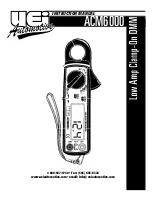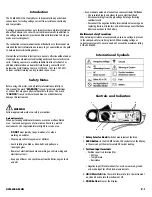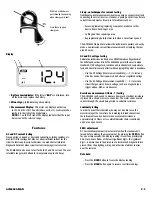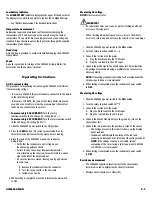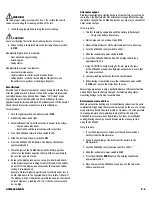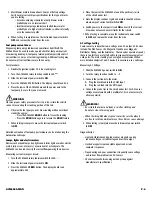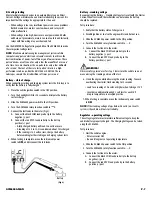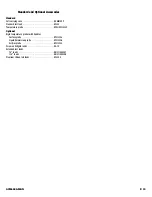
Clamp-on techniques for current testing
Traditional current measurement involves opening a suspect circuit and
connecting the meter in series. However, opening a circuit to perform a
current flow test creates its own set of problems such as:
• Accessing/removing/replacing a computer, module or other
device from a hard-to-get area
• Cutting and then repairing a wire
• Reprogramming data that was lost when a circuit was opened
The ACM6000 Clamp Meter allows the technician to quickly and easily
make a non-intrusive current flow measurement by clamping the jaw
around a wire.
AC and DC voltage testing
Automotive technicians routinely use a DMM to make voltage checks of
the battery and various circuits. The ACM6000 permits the user to make
standard AC/DC voltage tests, resistance and continuity tests, tempera t u r e
tests and non-intrusive current tests, while enjoying shirt pocket convenience.
• Use the DC Voltage Measurement capability ( V ) to test any
circuit or device that is powered by battery or regulated voltage
• Use the AC Voltage Measurement capability ( V ) to test any
circuit that generates its own voltage, such as a magnetic type
trigger pickup, ABS, or crank-sensor
Resistance measurement (Ohms -
Ω
) testing
The ACM6000 can be used to measure how much electrical resistance
is present in a circuit or across a connector. The meter sends a small
current through the circuit being tested to calculate resistance.
Continuity testing
In order to assist the technician who may not be able to see the
meter display at the same time he is making test lead connections,
the instrument sounds a buzzer when measured resistance is
approximately 25 Ohms or less, which indicates there is continuity
and not an open circuit.
ZERO adjustment
DC Current Measurement is most accurate when the instrument is
zeroed before making the measurement. By pressing the
ZERO
button
for one or two seconds, the display reading is reset to approximately
00.0. Note: Some flicker of the least significant digit – the rightmost
digit – is normal due to the presence of electrical and magnetic forces
present from shop lighting, wiring, and other live electrical sources
near the test area.
Data hold
• Press the
HOLD
button to freeze the display reading
• Press the
HOLD
button again to resume real time readings
Wire to be tested must
pass through the opening
when clamp-jaw is shut.
Press there to open
clamp-jaw.
Display
1.
Battery Low Indicator:
If the letters “
BAT
” are displayed, turn
off the meter and replace the battery.
2.
Minus Sign (-):
Indicates negative polarity.
3.
Measurement Display:
This meter can display numbers up
to 199.9 on the LCD. The units (ohms, volts, etc.) are displayed as
symbols to the right of the digital value.
NOTE:
A 1 on the left side of the display indicates that the input
has exceeded the selected range.
Features
AC and DC current testing
Frayed wiring, corroded or degraded connections, failing switches, etc.
may test OK for voltage but may not allow sufficient current for the
circuit to function properly. Technicians can make better informed
diagnostic decisions when circuit current (amperage) is also tested.
The ACM6000 can be used to test for both AC and DC current. The user
selectable range switch allows for measurement up to 200 Amps.
ACM6000-MAN
P. 2
2
1
3

